Our equipment posts cover the making, modification and use of observatories, telescopes and equipment. Select the posts for more information on the topics.
Exoplanet Observing with the Unistellar eVscope by Dr. Mike Rushton
Exoplanet Observing with the Unistellar eVscope

Background
Over the last few years, a number of “Smart Telescopes” have been developed for amateur use.
These typically consist of a relative narrow optical train attached to an automated mount. They have software to provide plate solving, tracking and image stacking. They are easy to setup and use.
They have relatively narrow fields and due to their short focal lengths (as well as small apertures) and are best suited to imaging small deep-sky objects.
Unistellar – a French Company setup in 2016 with £2m+ Kickstarter funding – first delivered its scope commercially in 2021. Unlike their competitors they foresaw the possibility of using them for science as well as taking pretty pictures. They partnered with SETI in Mountainview California to produce a program which included exoplanet transit observations.
At 4.5” aperture the scopes are considered too small to take part in the ExoClock program.
Exoplanet Observation

SETI produces a list of favoured targets for study. This is based mostly on the NASA requested targets for the TESS satellite. There are about 12,000 eVscope located all around the world but principally in Europe, the USA and Japan. These were the regions where the scopes were first marketed. About 1500 of these have been registered to the “Science” program and of those my impression is about 100 have been actively used for exoplanet observation. The figures for the week commencing 5/5/24 were 48 observations by 38 observers of 13 targets.
Although there are now several different models of eVscope they are all based around the same optical configuration. This is important as it makes combining data from different scopes relatively easy. SETI have set up a data reduction pipeline that takes uploaded raw frames from participating scopes and produces graphical and numerical output which is returned to participants via a Slack channel. When appropriate, the data from telescopes in different time zones can be combined to allow observations which are impossible from a single site.
This enables long transits to be observed and also long observations of poorly known timings to be tackled. Recently, the program has included candidates whose transits have only been captured 2 or 3 times. The aim is to see if there are any intermediate transits that would suggest a shorter period than originally calculated.
The latest combined observation attempt involved HIP 41378f which has a period of 542 days and transits lasting 19 hours. The ingress was timed to be first visible in S America and then egress in Western Europe. Individual observers were requested to make 2-4 hour observations during the time the star was at least 25 deg above the horizon. The plan was to have the star under continuous observation for 35 hours! (Most people were going to see no transit!). This therefore also included observers in Japan and Australia. 26 telescopes provided data. The results are awaited.
It is possible for single observers to choose their own targets (Usually from the Swarthmore database -astro.swarthmore.edu) and then do their own analysis. Until recently that involved requesting the data from the SETI servers to which it had been sent directly by the telescope’s internal software. This was slow and tedious, involving downloading about 10GB of data which had previously been sent to them. After lobbying from the users, it is now possible to download the data straight from the telescope to a local laptop.
My personal impression is that these scopes will never substitute for results from 8”+ aperture scopes but their uniformity and world-wide distribution plus consistent data reduction means that they have a place in Exoplanet observation.
Mike Rushton
Congratulations to Dave Grist & Steve Floodgate
A huge congratulations to CMHASD members Dave Grist and Steve Floodgate for receiving the BAA Horace Dall medal & gift this year.

Chairman John Archer wrote ”For anyone who travelled up to the Institute of Physics last Saturday or tuned in via Zoom for the BAA meeting would have seen this year’s recipients of the Horace Dall medal & gift – “The award shall be made to a person, whether or not a member of the Association, who has shown marked ability in the making of Astronomical Instruments. If two or more people have been jointly concerned in a particular work then each person may receive a medal and gift.” This year the worthy recipients were our very own Dave Grist and Steve Floodgate, expert converters of spare and unloved telescopes into fantastically popular and fun to use Dobsonians. Well done both of you – we’re proud of your achievements and grateful for your continued efforts contributing to the Society practical observing and outreach.”
Below is a selection of photos showing Dave & Steve being presented with their medals by the President of the BAA David Arditti on Saturday 9th December 2023 at the BAA Christmas Meeting. Well done guys 🙂

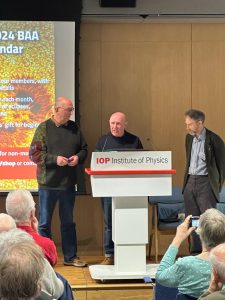
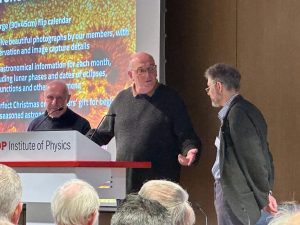
New Society Solar Projector built by member George Buckberry – Society Meeting – 2023.01.26
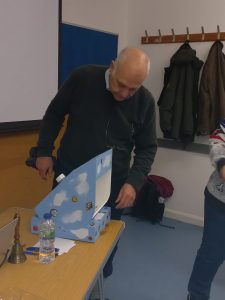
Member George Buckberry with his hand built Solar Projector
Last week following our Society meeting on the 26th January 2023, we learned about the design and construction of a table-top solar projector built by George Buckberry. After all of the effort involved in building the projector, George has very kindly donated it to the Society for use by members and also as a means of educating the public at one of our outreach events. Thank you George for your very kind donation.
Below is a link to George’s PowerPoint presentation of how George built the Solar Projector in the form of a PDF file which you can download.
SolarScope Design & Build by George Buckberry of CMHASD
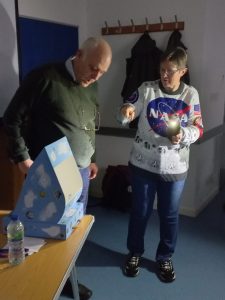
Crayford Manor House Astronomical Society Dartford awarded National Archives; Archives Revealed Scoping Grant
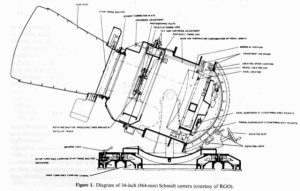
This Archives Revealed scoping grant is the first stage for funding the restoration, conservation, safeguarding, cataloguing, digitisation, and public sharing of this unique collection before deterioration and loss occurs. The Hewitt Camera Archive Collection is an insightful, historical and scientific resource into the UK’s part in the early days of space exploration. CMHASD is committed to sharing this valuable astronomical research archive with current and future generations as a physical and digital resource for all.
Quote from CMHASD President John Archer: “CMHASD is thrilled and grateful to The National Archives, The Pilgrim Trust, and the Wolfson Foundation for the award of this Archives Revealed scoping grant for our Hewitt Camera Archive Collection. This grant will enable our small charitable society to fund expert opinion and guidance to assess the digitisation, cataloguing, and planning towards making this unique UK space history and astronomical photographic collection safe and publicly available to the world. So…watch this space!”

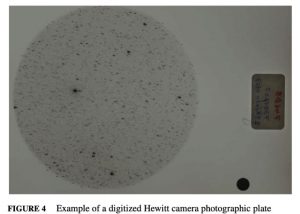
We are grateful for this opportunity to move the current situation on and provide future access of the Hewitt Camera Archive Collection to the world before it further degrades or suffers calamity!
We are always grateful for offers of help or ideas for achieving our objective of fulfilling our solemn commitment to keeping the Hewitt Camera Archive Collection safe and allowing full exploitation by the astronomical, scientific, historical community… and lets not forget yourself!’

Making a Hi-Res Solar Telescope
Simon modified a cheap, old and unused telescope with significant chromatic aberration into a super high resolution Solar telescope, his video below explains how he did it.

Making a Solar Filter for my Skywatcher 190MN
NEVER LOOK AT THE SUN DIRECTLY. Please click here for solar observing safely.
My Skywatcher 190MN telescope has a very wide field of view I can easily fit the full Moon or Sun on the chip, so I thought I’d get myself some Baader solar Safety Film and make myself a solar filter – the video below shows how i made it and shows some early results. Check-out our solar section for more images.
Mesu e200 Mount Unboxing and Assembly
I recently bought a Mesu e200 (also know as the Mesu MKII) mount. This mount uses friction rather than gears so doesn’t have any backlash, it is incredibly accurate and can handle a load of 100Kg (that’s 18 stone! or over 200lb!) Check-out the video for...
Dobsonian Telescope Mount – flat pack
In this video Simon Dawes builds a Dobsonian telescope mount for Keith that folds flat for...
EQ6 Belt Drive Mod
The EQ6 has standard brass gears on the stepper motor and worm gear, with a ‘transfer’ gear to translate the stepper motion to the worm gear. These gears introduce errors and backlash, the belt drive mod is designed to replace these gears with a timing belt...
EQ6 Hyper Tune
The EQ6 hyper tune is a procedure to strip down and rebuild your mount to improve performance, the exact details are best followed from astro-baby.com so I won’t copy them here. The tune-up includes replacing the plastic shims and replacing them with PTFE ones...
EQ6 Locking Power Mod
The EQ6 is known for its power connector coming out or momentarily disconnecting, which is not something you want happening in the middle of an imaging session. I’d previously replaced all my power connectors to a type with a locking collar and decided to mod my...
Super Smooth EQ6 Altitude Adjustment Mod
The EQ6 is difficult to polar align in Altitude, especially when fully loaded, the Knobs Mod can help, but only so far because the design of the altitude adjustment is flawed. Modern Astronomy make a ‘rail mod’ this corrects the design and makes...
Super Smooth EQ6 Azimuth Adjustment
The Eq6 is fixed to the pier/tripod using a central bolt, but this generates significant friction between the tripod/pier and EQ6 which can make polar alignment along the azimuth axis difficult, you need the central bolt to be tight to ensure no movement but loose to...
SkyWatcher EQ6 Knobs Mod
The polar adjustment knobs on the EQ6 are not very good, upgrading these parts will make your telescope mount much easier to use and therefore will result in better polar alignment leading to better images. The problems: The Azimuth adjustment knobs are too...
All Sky Cam Project
At a recent society night Keith described how he has built an all-sky camera, mainly from parts he had laying around, the camera is capable of producing a live view of the sky, time laps video summary of the night, can upload the images to a website for public viewing...
Building Dobsonian Mounts
Members Steve and Dave with some technical support from Keith have built another two Dobsonian telescopes for the society using donated Newtonian tubes, one is a 200mm F5 Skywatcher the other a 300mm F5.3 Orion Optics. The design is the same as the previous Dobsonian...
A DSLR Cooler
A DSLR, ideally one that has been modded to remove the filters is an accessible way to begin imaging, and I have successfully imaged using a ‘full spectrum mod’ Canon 600D for many years. Unfortunately these cameras are not cooled and the sensor...
Making Dew Heater Bands and Controller
Introduction: Dew heaters warm the optics of a telescope to prevent dew forming. Commercial control units and heater elements are available, however with a couple of hours, a soldering iron and a few tools, the control units and heaters can easily be constructed at...
Frankenscope
The Frankenscope I needed a portable telescope to take to places such as Kelling Heath. My main telescope is stuck in its observatory. It needs to allow me to do imaging as well as visual observations. The solution was to be build Frankenscope! What do you...
Large Telescopes
The Society and its members possess a notable range of astronomical equipment, much of it home made. A number of the these instruments have been constructed by John Wall who is internationally known as a telescope maker and is the inventor of the ‘Crayford...
Variable Barlow
Variable Barlow Adapter for a Webcam Changing the distance of an eyepiece or other sensor such as a webcam or DSLR changes the effective power (magnification) Andy Barber has made such a set-up for planetary imaging with a Phillips Toucam. The effective focal length...
DIY Finderscope
ATM Finderscope A finderscope is an essential accessory for your telescope, if you don’t have one, or your finderscope uses an objective less than 50mm in diameter you might consider making one, this is a satisfying accessory to make and doesn’t require any real skill...
A Battery-free Electric Focuser
A Battery Free Electric Focuser Building an electric control for your focuser can help you achieve focus easier & quicker. With an electric control focuser, there is no need to touch the telescope and so you don’t induce telescope wobble, which in turn,...
Time Delay Integration a.k.a Drift Scanning
What is Drift Scanning? If you try to take an image on an un-driven mount the stars will trail as the Earth rotates. Now imagine a star on a CCD, it will move from pixel to pixel producing a line rather than a point source. Now if we could move the image on the CCD at...
Crayford Eyepiece Mount (Crayford Focuser)
Introduction Designed and donated to the world by telescope maker and former member John Wall. The design has two principle features:- Restriction of movement of the eyepiece focusing tube to one degree of motion – which is linear – and a secondary motion...
Dismantling the 24 inch Telescope built by John Wall
When the Manor house closed in December 2011 we lost our 50 year old observatory so we had to find a new home for our 24″ telescope built by John Wall 🙁 York Astronomical Society agreed to rehouse the telescope. Below are a selection of photos showing what...
Multiple Papers on the APT
Here we describe the construction and scientific output of the Automatic Photometric Telescope, built in the mid 1980’s the APT became the most productive variable star observation platform in the UK – possibly the world. Another first for Crayford Manor...
